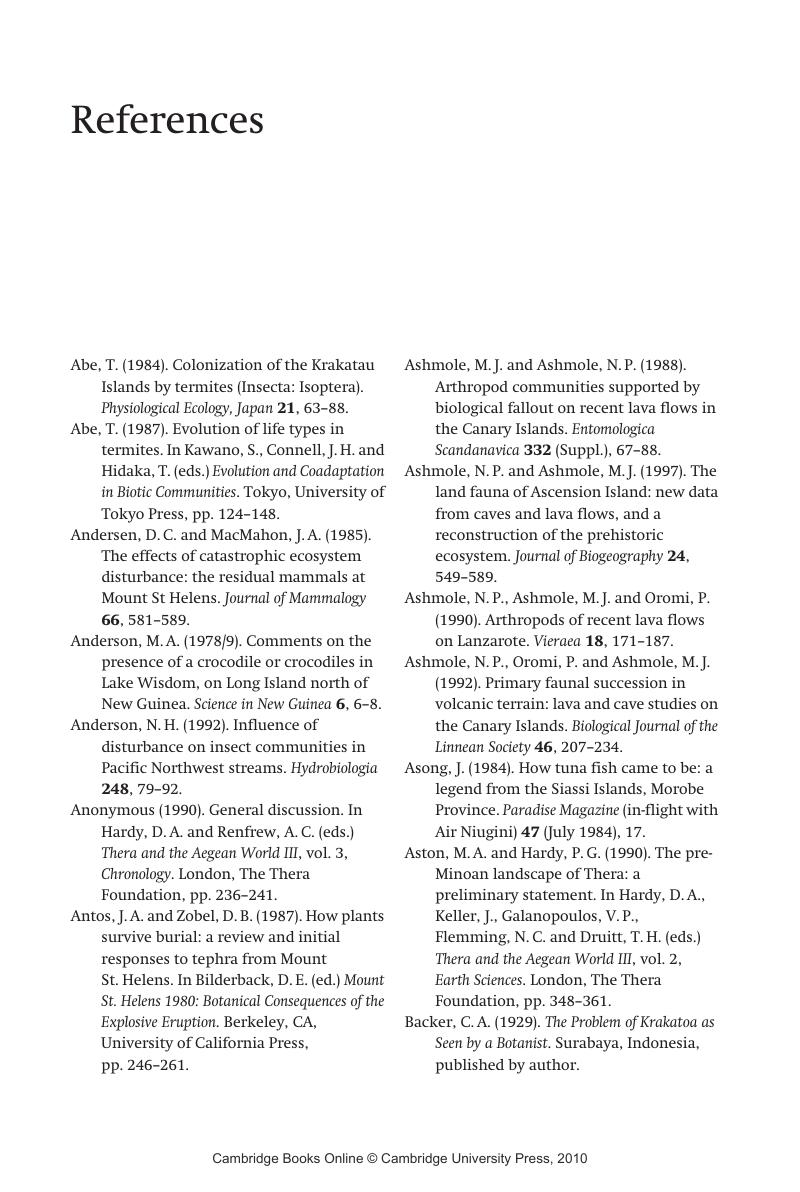Book contents
References
Published online by Cambridge University Press: 12 January 2010
Summary

- Type
- Chapter
- Information
- Island ColonizationThe Origin and Development of Island Communities, pp. 260 - 280Publisher: Cambridge University PressPrint publication year: 2007
References
- 1
- Cited by

